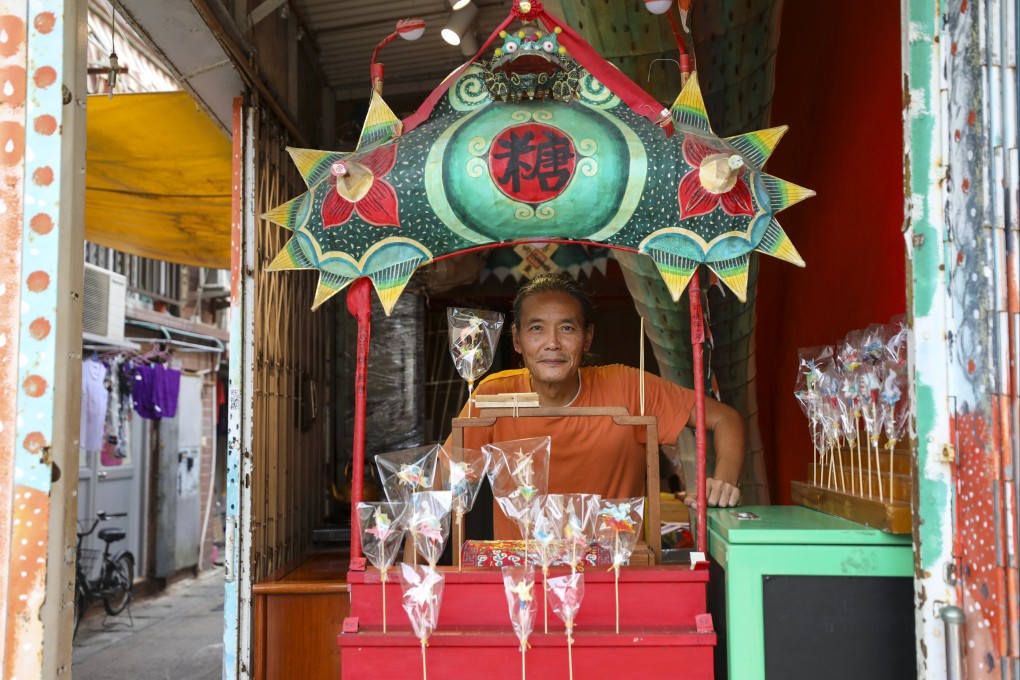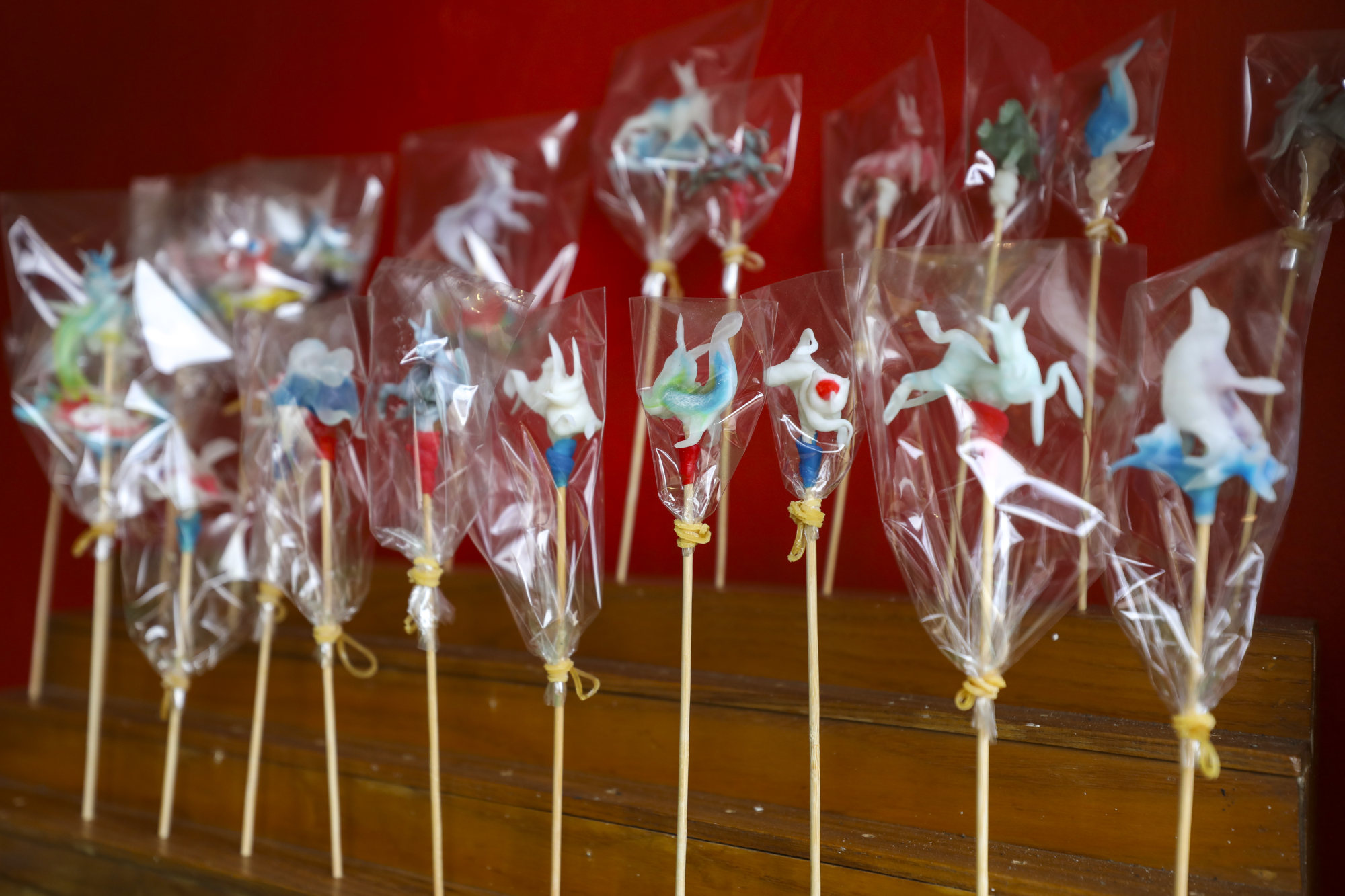
Hong Kong’s Sugarman practises the traditional Chinese craft of making candy figurines
- Louis To Wun remembers how roaming confectioners in his childhood inspired his love for this art




Why is sugar art important in Hong Kong?

Why is timing so crucial when crafting figurines from melted sugar?

What inspired To's interest in sugar art?

Why is sugar art important in Hong Kong?

Difficulty: Summiteer (Level 3)
Louis To Wun deftly pinches and pulls a heated piece of sugar, sculpting it into lifelike animals and enchanting creatures.
For more than a decade, the Hongkonger has been practising the traditional Chinese craft of making sugar figurines in his shop in Cheung Chau. With a history spanning over 600 years, sugar art is recognised as an intangible cultural heritage of Hong Kong.
Affectionately known as Sugarman, To, who is in his 50s, described his work as being “free-spirited”.
“What I like about the art is that it gives a feeling of magic that would ‘wow’ people, and they cannot know what it will be like until I finish sculpting,” he explained.
Childhood delights
Growing up in southern China, To recalled his delight whenever roaming confectioners arrived near his home: “You could only meet them at big events. Some only came to our neighbourhood once in a few years.”
Despite having no money to buy sweets, To would stand at the stall all day watching as the craftspeople transformed blobs of sugar into animal sculptures.
“Even now, I can still sharply remember how the confectioner dressed and the straw hat he wore ... I have always wanted to make sugar figurines – it is part of my childhood memory,” the artist reminisced.
By the age of 38, To had already made a name for himself as an artist famous for his bamboo sculptures. But he hoped to rekindle his love for sugar art.

Becoming a sugar artist
“The skill is not difficult to learn as long as you are willing to try and are not afraid of failure,” To said, adding that he endured blisters from the hot sugar and once even had a pot explode.
He spent six months experimenting with various types of sugar and temperatures. He highlighted the importance of timing. Shaping figurines requires the sugar to be between 60 and 80 degrees Celsius, with only three minutes before it is too hard to mould.
At first, To only made the sugar art for his own joy, but his wife encouraged him to share his masterpieces.
The artist recalled an old man who wanted to try the candy but had diabetes. This inspired To to change his recipe by replacing maltose with isomalt, a sugar substitute safe for people with diabetes.
“Even now, I am still learning about sugar art,” To shared. “When you are passionate about something, it gradually evolves and develops.”
Find the words in the puzzle below to test your understanding of the vocabulary in this story.
Suggested answers
-
Before you read: Sugar art has a long history going back hundreds of years. It is part of Hong Kong’s cultural heritage.
-
Stop and think: Timing is important to master because the sugar must be between 60 and 80 degrees Celsius to mould, and the shaping must be completed within three minutes or the sugar becomes to hard.
-
Consider: As a youngster, To loved to watch the travelling confectioners creating their artwork for big events.


Why is timing so crucial when crafting figurines from melted sugar?

What inspired To's interest in sugar art?
a person who makes or sells sweets
doing something with skill and quick movements
travelling from place to place
numerous or countless
to think about the past fondly